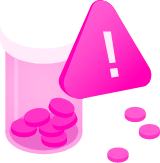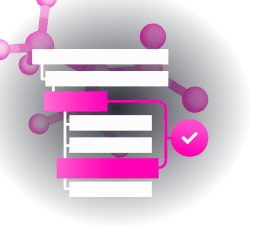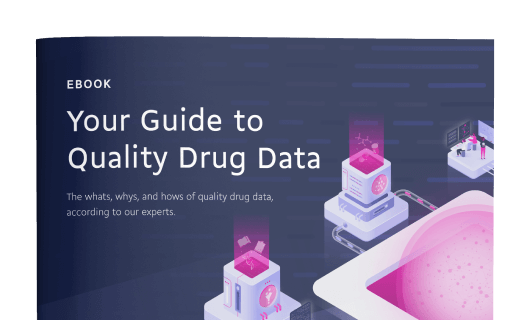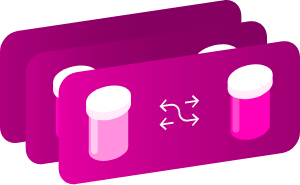Identification
- Generic Name
- 3-hydroxyisoxazole-4-carboxylic acid
- DrugBank Accession Number
- DB02111
- Background
Not Available
- Type
- Small Molecule
- Groups
- Experimental
- Structure
- Weight
- Average: 129.0709
Monoisotopic: 129.006207589 - Chemical Formula
- C4H3NO4
- Synonyms
- Not Available
Pharmacology
- Indication
Not Available
 Reduce drug development failure ratesBuild, train, & validate machine-learning modelswith evidence-based and structured datasets.Build, train, & validate predictive machine-learning models with structured datasets.
Reduce drug development failure ratesBuild, train, & validate machine-learning modelswith evidence-based and structured datasets.Build, train, & validate predictive machine-learning models with structured datasets.- Contraindications & Blackbox Warnings
 Prevent Adverse Drug Events TodayTap into our Clinical API for life-saving information on contraindications & blackbox warnings, population restrictions, harmful risks, & more.Avoid life-threatening adverse drug events with our Clinical API
Prevent Adverse Drug Events TodayTap into our Clinical API for life-saving information on contraindications & blackbox warnings, population restrictions, harmful risks, & more.Avoid life-threatening adverse drug events with our Clinical API- Pharmacodynamics
Not Available
- Mechanism of action
Target Actions Organism UL-lactate dehydrogenase Not Available Plasmodium falciparum (isolate CDC / Honduras) - Absorption
Not Available
- Volume of distribution
Not Available
- Protein binding
Not Available
- Metabolism
- Not Available
- Route of elimination
Not Available
- Half-life
Not Available
- Clearance
Not Available
- Adverse Effects
 Improve decision support & research outcomesWith structured adverse effects data, including: blackbox warnings, adverse reactions, warning & precautions, & incidence rates. View sample adverse effects data in our new Data Library!Improve decision support & research outcomes with our structured adverse effects data.
Improve decision support & research outcomesWith structured adverse effects data, including: blackbox warnings, adverse reactions, warning & precautions, & incidence rates. View sample adverse effects data in our new Data Library!Improve decision support & research outcomes with our structured adverse effects data.- Toxicity
Not Available
- Pathways
- Not Available
- Pharmacogenomic Effects/ADRs
- Not Available
Interactions
- Drug Interactions
- This information should not be interpreted without the help of a healthcare provider. If you believe you are experiencing an interaction, contact a healthcare provider immediately. The absence of an interaction does not necessarily mean no interactions exist.Not Available
- Food Interactions
- Not Available
Categories
- Drug Categories
- Not Available
- Chemical TaxonomyProvided by Classyfire
- Description
- This compound belongs to the class of organic compounds known as isoxazoles. These are heterocyclic organic compounds containing an isoxazole moiety, with a structure characterized by a five-member aromatic ring with one oxygen atom and one nitrogen atom at ring positions 1 and 2, respectively.
- Kingdom
- Organic compounds
- Super Class
- Organoheterocyclic compounds
- Class
- Azoles
- Sub Class
- Isoxazoles
- Direct Parent
- Isoxazoles
- Alternative Parents
- Vinylogous amides / Heteroaromatic compounds / Lactams / Oxacyclic compounds / Monocarboxylic acids and derivatives / Carboxylic acids / Azacyclic compounds / Organopnictogen compounds / Organooxygen compounds / Organonitrogen compounds show 2 more
- Substituents
- Aromatic heteromonocyclic compound / Azacycle / Carboxylic acid / Carboxylic acid derivative / Heteroaromatic compound / Hydrocarbon derivative / Isoxazole / Lactam / Monocarboxylic acid or derivatives / Organic nitrogen compound show 7 more
- Molecular Framework
- Aromatic heteromonocyclic compounds
- External Descriptors
- Not Available
- Affected organisms
- Not Available
Chemical Identifiers
- UNII
- Not Available
- CAS number
- Not Available
- InChI Key
- JLPHBZYAQYOJND-UHFFFAOYSA-N
- InChI
- InChI=1S/C4H3NO4/c6-3-2(4(7)8)1-9-5-3/h1H,(H,5,6)(H,7,8)
- IUPAC Name
- 3-hydroxy-1,2-oxazole-4-carboxylic acid
- SMILES
- OC(=O)C1=CON=C1O
References
- General References
- Not Available
- External Links
- PDB Entries
- 1t25
Clinical Trials
Pharmacoeconomics
- Manufacturers
- Not Available
- Packagers
- Not Available
- Dosage Forms
- Not Available
- Prices
- Not Available
- Patents
- Not Available
Properties
- State
- Solid
- Experimental Properties
- Not Available
- Predicted Properties
Property Value Source Water Solubility 43.9 mg/mL ALOGPS logP 0.6 ALOGPS logP 0.94 Chemaxon logS -0.47 ALOGPS pKa (Strongest Acidic) 3.82 Chemaxon pKa (Strongest Basic) -2.8 Chemaxon Physiological Charge -2 Chemaxon Hydrogen Acceptor Count 4 Chemaxon Hydrogen Donor Count 2 Chemaxon Polar Surface Area 83.56 Å2 Chemaxon Rotatable Bond Count 1 Chemaxon Refractivity 27.05 m3·mol-1 Chemaxon Polarizability 9.82 Å3 Chemaxon Number of Rings 1 Chemaxon Bioavailability 1 Chemaxon Rule of Five Yes Chemaxon Ghose Filter No Chemaxon Veber's Rule No Chemaxon MDDR-like Rule No Chemaxon - Predicted ADMET Features
Property Value Probability Human Intestinal Absorption + 0.9604 Blood Brain Barrier + 0.95 Caco-2 permeable - 0.6709 P-glycoprotein substrate Non-substrate 0.8697 P-glycoprotein inhibitor I Non-inhibitor 0.9809 P-glycoprotein inhibitor II Non-inhibitor 1.0 Renal organic cation transporter Non-inhibitor 0.9579 CYP450 2C9 substrate Non-substrate 0.8566 CYP450 2D6 substrate Non-substrate 0.8269 CYP450 3A4 substrate Non-substrate 0.6346 CYP450 1A2 substrate Non-inhibitor 0.653 CYP450 2C9 inhibitor Non-inhibitor 0.894 CYP450 2D6 inhibitor Non-inhibitor 0.9135 CYP450 2C19 inhibitor Non-inhibitor 0.8605 CYP450 3A4 inhibitor Non-inhibitor 0.9058 CYP450 inhibitory promiscuity Low CYP Inhibitory Promiscuity 0.9705 Ames test Non AMES toxic 0.7342 Carcinogenicity Non-carcinogens 0.8952 Biodegradation Ready biodegradable 0.8845 Rat acute toxicity 2.1643 LD50, mol/kg Not applicable hERG inhibition (predictor I) Weak inhibitor 0.9969 hERG inhibition (predictor II) Non-inhibitor 0.9678
Spectra
- Mass Spec (NIST)
- Not Available
- Spectra
Spectrum Spectrum Type Splash Key Predicted GC-MS Spectrum - GC-MS Predicted GC-MS splash10-01t9-9600000000-20015c6d271516c725ab Predicted MS/MS Spectrum - 10V, Positive (Annotated) Predicted LC-MS/MS splash10-03di-0900000000-307c00a6d6573974f0e8 Predicted MS/MS Spectrum - 10V, Negative (Annotated) Predicted LC-MS/MS splash10-053r-9000000000-27ec2f1f842601ec6eef Predicted MS/MS Spectrum - 20V, Positive (Annotated) Predicted LC-MS/MS splash10-0gvo-9500000000-17983e4ce99661690cad Predicted MS/MS Spectrum - 20V, Negative (Annotated) Predicted LC-MS/MS splash10-0006-9000000000-0ae9dc82781c1cde6fb1 Predicted MS/MS Spectrum - 40V, Positive (Annotated) Predicted LC-MS/MS splash10-0006-9000000000-43e098b032f72a26e65f Predicted MS/MS Spectrum - 40V, Negative (Annotated) Predicted LC-MS/MS splash10-0006-9000000000-e87ed5d9ab599db8bf5e Predicted 1H NMR Spectrum 1D NMR Not Applicable Predicted 13C NMR Spectrum 1D NMR Not Applicable - Chromatographic Properties
Collision Cross Sections (CCS)
Adduct CCS Value (Å2) Source type Source [M-H]- 117.8641458 predictedDarkChem Lite v0.1.0 [M-H]- 123.96953 predictedDeepCCS 1.0 (2019) [M+H]+ 118.7812458 predictedDarkChem Lite v0.1.0 [M+H]+ 126.11279 predictedDeepCCS 1.0 (2019) [M+Na]+ 118.3890458 predictedDarkChem Lite v0.1.0 [M+Na]+ 134.60881 predictedDeepCCS 1.0 (2019)
Targets

Build, predict & validate machine-learning models
Use our structured and evidence-based datasets to unlock newinsights and accelerate drug research.
Use our structured and evidence-based datasets to unlock new insights and accelerate drug research.
- Kind
- Protein
- Organism
- Plasmodium falciparum (isolate CDC / Honduras)
- Pharmacological action
- Unknown
- General Function
- L-lactate dehydrogenase activity
- Specific Function
- Not Available
- Gene Name
- Not Available
- Uniprot ID
- Q27743
- Uniprot Name
- L-lactate dehydrogenase
- Molecular Weight
- 34107.505 Da
References
Drug created at June 13, 2005 13:24 / Updated at June 12, 2020 16:52

